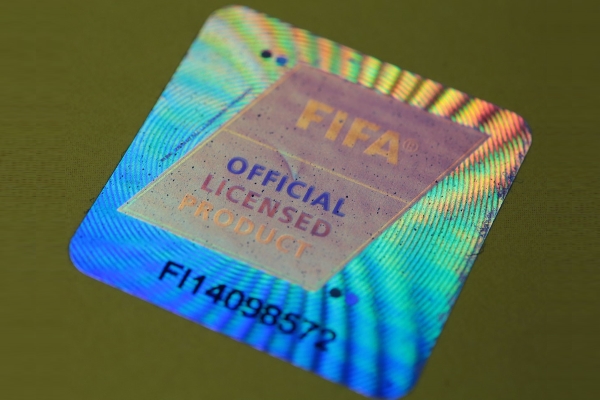
The FIFA Women’s World Cup 2019 has now come to a climactic end, and looks set to be a defining moment for women’s football on the global stage, with the brands involved onto a winner too.
Such a high-profile event gives them a fantastic opportunity to boost their bottom line by offering unique memorabilia and merchandise to fans all over the world. While opportunities like these are gold-dust, they also come with a dark side. Increasingly sophisticated counterfeiters are replicating designs and flooding the market, duping fans into buying often expensive, badly made and sometimes even dangerous fakes that they think are real - with disastrous consequences for all involved.
Business is booming in the counterfeit market. It’s set to reach $1.7trn by 2020and according to the Organisation for Economic Cooperation and Development (OECD), it currently accounts for 3.3 per cent of all global trade. Businesses and brands lose market share, revenue and customer trust because of counterfeiters. This damages their reputation, the global economy is affected, and everyone loses out.
Warren Buffet once said, “If you lose money for the firm, I will be understanding. If you lose reputation, I will be ruthless.” Why? Because, on a 10-point reputation scale, 1 point difference is worth $500m for large corporations.**
Counterfeiting poses such a significant and serious threat to every sector, not just sports, fashion and luxury goods, yet so few CEOs seem to share Buffet’s view. Counterfeiters are getting more ingenious every day and yet boardrooms seem oblivious that these illicit traders are now one of their most important competitors, if not THE most important, judging by their ability to keep increasing market share year on year.
One of the problems is where brand protection sits on the balance sheet. Many still regard it as a cost rather than an investment. It’s not something that’s always easy to demonstrate as a return on investment, yet when linked to key business drivers, such as revenue, profit protection, reputation management and risk mitigation, it’s clearly a critical business concern and should be a top priority for the c-suite of any company.
So how safe are your brands and what can you do to protect them?
At De La Rue, we’ve spent the last 150 years innovating to help businesses stay ahead of every breed of counterfeiter that’s emerged. We’ve developed highly sophisticated security features and product identifiers, such as our PureImage customisable holographic security thread. We’ve built long-term partnerships with governments, businesses and brands so collectively, we fight illicit trade. This includes our licensing programme for the FIFA World Cup, which stretches back to 2006 and covers four World Cup Tournaments including this year’s Women’s World Cup.
We’re proud to be at the heart of protecting global football and brands associated with the game. This year, our licenced product authentication holograms were on many millions of Women’s World Cup merchandising. Through this, we are helping FIFA to reinvest revenues back into the game and keep fans safe from fake goods.
We urge you to follow Warren Buffet’s advice. Be ruthless in your actions against counterfeiters, protect your brands and business reputation before it is too late. Start by following these best practice principles:
1. Start thinking of the counterfeiter as your competitor. If they aren’t already your biggest competitor, they could be soon. Take steps to understand how they operate and what you can do to stop them.
2. Think global, act local. Counterfeiting is a global issue and can extend across supply chains and borders. 3. Change the balance sheet. Brand protection is an investment. It’s linked inextricably to the “3 Rs” of revenue, reputation and risk.
4. Innovate to protect your market share. Employ the latest design out there to protect your brand. You need to be able to stand still before you can grow sales.
5. Collaborate externally. We need a united front to fight back effectively. Build coalitions within your sector. Partner with competitors and align with governments, agencies and other groups. Share knowledge to benefit all.
6. Collaborate internally. You need a joined-up approach internally across all departments and regions. Share what’s happening, strategies deployed, and record what is working and what isn’t.
7. Build a strong communications plan. Be clear on what you’re doing internally to all staff and externally to your partners and stakeholders. Consistency is key.
8. Consumers are your first line of defence. Educate and engage your customers and reward them for their loyalty.
9. Get expert advice, counterfeiting is a fast-moving world. Brand protection experts, such as De La Rue, have the insight, innovation, expertise and a suite of services and products that help brands keep one step ahead of counterfeiters. Make sure you know about the latest developments.
Counterfeiters are transforming their approaches and business models, often moving one step ahead of brands and even governments by finding new ways and channels to exploit the most vulnerable markets and brands. If in doubt, take action before it’s too late.
** Black, E., T. Carnes, and V. Richardson (2000). ‘The market value of corporate reputation,’ Corporate Reputation Review, 3(1), 31-42.

Jerome Pichot is head of product marketing, authentication and traceability at De La Rue
©
SecuringIndustry.com





